Introduction to Online Store Design and Its Importance in the Digital Age
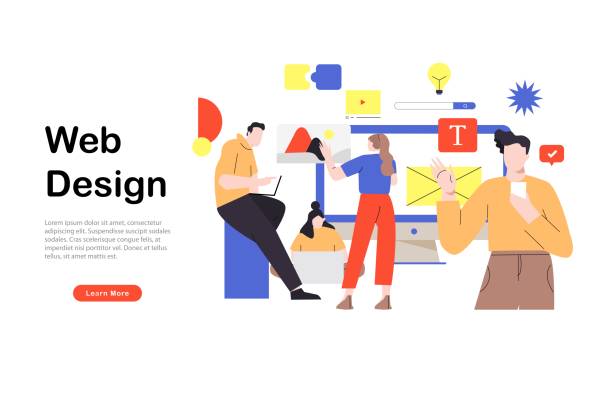
In today’s world, where geographical boundaries for commerce have blurred, #onlinestoredesign is no longer a luxury choice, but a necessity for every #onlinebusiness.
A professional e-commerce website is not just a permanent showcase for your products and services, but also a powerful platform for direct communication with customers, collecting valuable data, and sustainable development of your #ecommerce.
This section will help you gain a deeper understanding of why investing in online store design is important and why a strong digital presence is vital for survival and growth in the current competitive market.
This process, from initial conceptualization to launch and continuous optimization, is a complex yet highly rewarding path that requires attention to detail and smart strategies.
The importance of e-commerce is so high that even traditional businesses have moved towards this approach to attract more customers and increase their market share.
With an efficient e-commerce website, you can access a market beyond your physical boundaries and provide services to customers 24 hours a day, 7 days a week.
This provides unparalleled opportunities for growth and scalability.
One of the key aspects in e-commerce website design is ensuring a smooth and easy user experience (UX).
Customers expect to be able to easily find products, get sufficient information about them, and complete the purchasing process without any issues.
A website that loads slowly or has complex navigation will quickly drive customers away.
Therefore, investing in building a professional online store that is not only beautiful but also technically optimized is crucial.
Furthermore, website security and customer data protection are also of high importance.
With the increase in cyberattacks, customers are more likely to seek websites that use strong security protocols.
In summary, successful online store design involves a combination of technical, visual, and marketing factors, all of which must work in perfect harmony to achieve the best results.
This comprehensive approach enables businesses to have a powerful and impactful presence in the digital world and achieve their sales and growth goals.
Choosing the right platform, optimizing for search engines, and utilizing digital marketing strategies are also essential components in this journey.
Are you tired of losing business opportunities due to not having a professional corporate website?
Rasaweb helps you by designing a professional corporate website:
✅ Build a powerful and reliable image for your brand
✅ Convert website visitors into loyal customers
⚡ Get a free consultation now!
Key Features of a Successful E-commerce Website
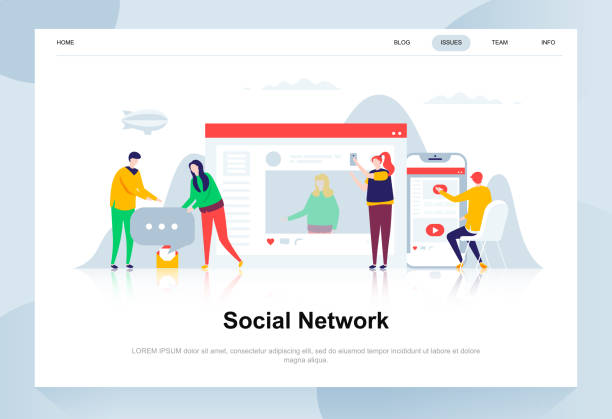
For an e-commerce website design to be successful and meet customer expectations, it must have a set of key features.
These features go beyond merely displaying products and relate to the overall user experience, site efficiency, and management capabilities.
The first and perhaps most important feature is excellent Usability and User Experience (UX).
The site should be designed so that users can easily find their desired products, view their details, add them to the cart, and complete the payment process without complications.
Simple navigation, high loading speed, and responsive design for correct display on all devices (mobile, tablet, desktop) are among the basic requirements.
The second important feature is rich and high-quality content.
Products should have complete, accurate, and engaging descriptions, along with high-quality images and even product introduction videos.
Customer reviews and a Q&A section also significantly help the site’s credibility and buyers’ better decision-making.
The inventory and order management system must be efficient to prevent errors and allow customers to track their orders.
Website security is also of vital importance.
Using SSL certificates, secure payment gateways, and protecting users’ personal information builds customer trust and prevents potential problems.
Advanced SEO capabilities are also essential for the site’s visibility in search engines.
This includes the ability to add meta tags, optimized product descriptions, and friendly URL structures.
Additionally, integration with social networks and email marketing tools can help increase traffic and sales.
Other features such as a strong support system, the ability to create user accounts for customers, personalizing the shopping experience, and offering special promotions based on purchase history, help foster customer loyalty.
Ultimately, a successful e-commerce website design is both visually appealing and technically flawless, covering all the needs of both buyer and seller.
This is a long-term investment that will yield significant returns if implemented correctly.
Paying attention to these points in the online store implementation process can pave the way for success.
Choosing the Right Platform for Your Online Store
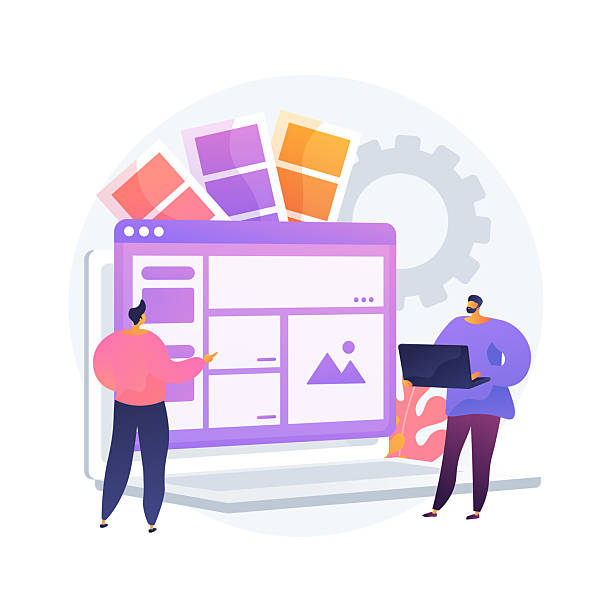
One of the most important decisions in online store design is choosing the right platform.
This choice will directly impact the site’s capabilities, costs, security, and future scalability of your business.
There are numerous options in the market, each with its own advantages and disadvantages.
Open-source platforms like WooCommerce, which is a plugin for WordPress, and Magento, offer high flexibility.
These platforms allow you to have complete control over the code and site design and provide many customization options.
However, they require more technical knowledge for installation, maintenance, and optimization, and may have higher development and support costs.
Also, security and updates will be your responsibility.
In contrast, cloud-based (SaaS) platforms like Shopify, BigCommerce, and Squarespace offer simplicity and ease of use.
These platforms are offered on a subscription basis and cover all technical aspects such as hosting, security, updates, and maintenance.
This option is ideal for small and medium-sized businesses that have less technical knowledge or do not want to get involved in technical issues.
However, they may have limitations in terms of customization, and their monthly costs can be significant in the long run.
The platform choice should be based on your budget, business size, technical needs, and future growth plans.
Before making a final decision, it is advisable to conduct thorough research and even use trial versions of the platforms.
This comparative table of common e-commerce website design platforms can be helpful in your decision-making:
| Feature | WooCommerce | Shopify | Magento |
|---|---|---|---|
| Platform Type | Open Source | Cloud (SaaS) | Open Source |
| Ease of Use | Medium (requires WordPress knowledge) | Very Easy | Difficult (requires high expertise) |
| Initial Cost | Low (free plugin, requires hosting and theme) | Monthly Subscription | High (requires specialized development) |
| Customization | Very High | Medium to High (with apps) | Very High |
| Maintenance and Security | User’s Responsibility | Platform’s Responsibility | User’s Responsibility |
| Scalability | Very High | High | Very High (for large businesses) |
The correct choice in the online store development process can guarantee the growth and success path of your business.
User Experience (UX) and User Interface (UI) in Online Stores
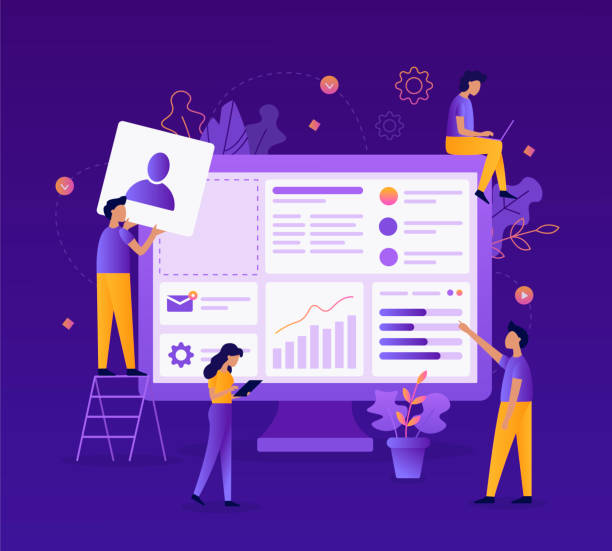
In the context of e-commerce website design, User Experience (UX) and User Interface (UI) are two inseparable and crucial concepts that determine the success or failure of an online store.
UI refers to the look and feel of your website: colors, fonts, images, icons, and the arrangement of various elements.
While UX relates to the user’s feelings when interacting with the site: Is navigation easy? Is the purchasing process smooth? Is information easily found? The ultimate goal in designing an e-commerce website is to create a pleasant and hassle-free experience for the user that encourages them to complete a purchase and even become a loyal customer.
For an excellent UX, your website must have high loading speed; even a small delay can lead to the user abandoning the site.
Navigation should be intuitive and logical, so that the user can access different parts of the site without having to think about where to click.
Using breadcrumbs and advanced product filters helps users find products faster.
Responsive design is also essential, as a significant portion of users access e-commerce sites via mobile devices.
Product images should be high-quality, multi-angle, and zoomable.
Product descriptions should be comprehensive, accurate, and persuasive.
The payment process should also be as simple as possible with minimal steps; diverse payment options and guest checkout can help reduce the cart abandonment rate.
In terms of UI, the design should be attractive and consistent with your brand.
Using appropriate colors, readable fonts, and sufficient whitespace helps improve readability and visual appeal.
Calls-to-Action (CTA) should be clear and prominent.
For example, the “Add to Cart” button should be easily recognizable.
Personalizing the user experience can also have a significant impact; displaying related products, custom recommendations, and personalized messages makes the customer feel valued.
Ultimately, focusing on user-centric design throughout all stages of e-commerce website creation, from needs analysis to implementation and testing, is the key to sustained success.
By paying attention to small details in UI and UX, a significant difference in sales volume and customer satisfaction can be made.
Disappointed by your e-commerce website’s low conversion rate? Rasaweb transforms your e-commerce site into a powerful tool for attracting and converting customers!
✅ Significant increase in visitor-to-buyer conversion rate
✅ Unparalleled user experience to boost customer satisfaction and loyalty⚡ Get a free consultation from Rasaweb!
SEO Strategies for Increasing Online Store Traffic
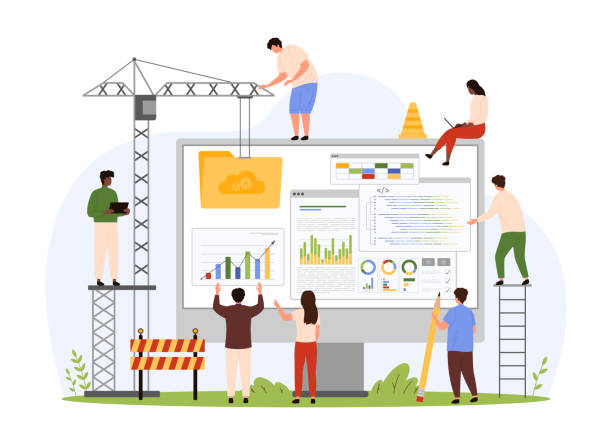
After completing e-commerce website design, the next crucial step is ensuring its visibility to potential customers.
This is where Search Engine Optimization (SEO) plays a pivotal role.
A strong SEO strategy drives organic (free) traffic from search engines like Google to your store and directly impacts your sales.
The first step is comprehensive keyword research.
You need to identify the keywords your customers use to find similar products.
These keywords should be naturally and purposefully included in page titles, product descriptions, meta descriptions, and even URLs.
You can use tools like Google Keyword Planner or Ahrefs for this purpose.
On-Page SEO involves several important factors.
Product descriptions must be unique and contain relevant keywords.
Strictly avoid duplicating content from other sites, as Google penalizes copied content.
Product images should also be optimized using Alt tags and appropriate file naming.
Website loading speed, as mentioned earlier, is an important SEO factor.
Slower websites rank lower in search results.
Responsive (Mobile-Friendly) design is also essential, as Google gives more importance to websites that provide a good mobile user experience.
URL structures should be short, readable, and contain keywords.
Off-Page SEO primarily focuses on building high-quality backlinks from reputable websites.
The more high-authority websites link to your store, the higher your site’s credibility and ranking with Google will be.
This can be achieved through creating valuable content that others link to, collaborating with influencers, or participating in industry events.
Blogging related to your products and industry is also an excellent way to attract organic traffic and create fresh content that search engines love.
By continuously implementing these SEO strategies and tracking their performance through tools like Google Analytics and Google Search Console, you can ensure that your e-commerce website will rank prominently in search results and attract a large number of potential customers.
This part of online store design and development is as important as the design itself and requires continuous attention.
Security and Payment Gateways in an Online Store

Security in e-commerce website design is an undeniable backbone.
In today’s digital world, where users’ personal and financial information is constantly exposed to cyber threats, customer trust in your site’s security is a determining factor in the success of your online business.
Without a strong security system, no matter how beautiful and user-friendly your site is, customers will not feel comfortable making purchases there.
The first and most fundamental step is using HTTPS protocol and SSL/TLS certificate.
SSL encrypts information between the user’s browser and your website server, preventing eavesdropping, tampering, or forging of data.
The presence of a green lock icon in the browser’s address bar indicates your site’s security and reassures users.
In addition to SSL, it is necessary to use strong firewalls (WAF), malware scanners, and regular software updates.
E-commerce website design platforms (such as WooCommerce, Magento, or Shopify) and their plugins must always be updated to the latest versions to address potential security vulnerabilities.
Also, using strong passwords and two-factor authentication (2FA) for the site’s admin panel prevents unauthorized access.
Regular backups of all site data, including the database and files, ensure that in case of any security or technical issue, you can quickly restore the site and minimize damage.
Alongside overall site security, choosing secure and reputable payment gateways is also highly important.
Intermediate payment gateways, such as ZarinPal or IDPay in Iran, or Stripe and PayPal internationally, do not directly receive customer credit card information from your site; they process it in their own secure environment.
This relieves you of the security responsibility and minimizes the risks associated with storing sensitive payment information.
Ensure that the payment gateways you choose comply with PCI DSS security standards.
Transparent communication about privacy policies and data security to users helps increase their trust.
By observing these security tips, your e-commerce website design will not only look professional but also provide a secure and reliable environment for your customers.
Marketing and Promoting Your Online Store

After completing e-commerce website design and ensuring its proper functioning, the next crucial step is introducing it to the world and attracting customers.
Marketing and promoting an online store is a continuous and multifaceted process that requires diverse strategies.
Simply having a beautiful e-commerce website does not guarantee sales; you must actively strive for visibility and audience attraction.
One of the most powerful tools is Content Marketing.
Creating a blog related to your products or industry, writing guide articles, producing educational videos, and infographics can attract organic traffic to your site and establish you as an authority in your field.
This content can also be shared on social networks.
Social Media Marketing is also vital for online stores.
Active presence on platforms like Instagram, Telegram, Facebook, or LinkedIn (depending on your product type and audience) can help you connect with your customers, introduce new products, run advertising campaigns, and receive feedback.
Paid Advertising, such as Google Ads and Social Media Ads, are quick ways to attract targeted traffic.
These types of advertisements allow you to target specific audiences based on age, gender, interests, and online behavior, and manage your budget optimally.
Email Marketing is also a highly effective tool for maintaining communication with existing customers and converting visitors into customers.
Collecting email addresses through pop-ups or registration forms on the site, and sending regular newsletters including discounts, new products, and valuable content, can increase customer retention rates.
Collaborating with influencers and Affiliate Marketing are also effective ways to expand your reach.
Running creative and engaging advertising campaigns that align with your brand’s spirit can make your name memorable in the minds of the audience.
Ultimately, success in online store marketing requires continuous data analysis and strategy optimization based on performance and feedback.
Your online store development must be accompanied by a comprehensive marketing plan.
| Marketing Type | Description | Advantages | Disadvantages |
|---|---|---|---|
| SEO | Optimizing the site for higher rankings in search engines | Organic and sustainable traffic, high credibility | Time-consuming results, high competition |
| Content Marketing | Production and distribution of valuable content (articles, videos) | Attracting loyal customers, SEO improvement | Requires time and resources for content creation |
| Social Media Marketing | Activity on social platforms for interaction and promotion | Wide reach, direct customer interaction | Requires time management, algorithm changes |
| Paid Advertising (PPC) | Paying for ad display on search engines or networks | Fast results, high targeting, budget control | High cost, requires continuous optimization |
| Email Marketing | Sending emails to subscribers for announcements and sales | High ROI, personal communication | Requires collecting email list, spam risk |
Maintenance and Support After Launching an Online Store
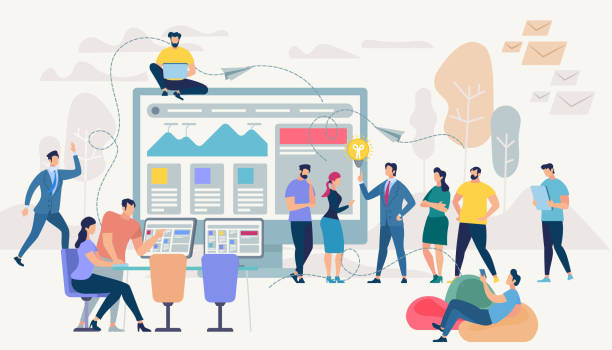
Successfully launching an e-commerce website is not the end of the journey, but the beginning of a new phase of responsibilities and efforts.
Continuous maintenance and support are among the most vital aspects to ensure the smooth operation, security, and up-to-dateness of your online store.
Without proper maintenance, your site may encounter performance issues, develop security vulnerabilities, or suffer a decline in user experience.
This process involves a set of technical and administrative tasks that must be performed regularly.
The first and most important aspect is software updates.
The Content Management System (CMS), plugins, themes, and any other software used in your e-commerce website design must be regularly updated to the latest available versions.
Developers continuously release updates to fix bugs, improve performance, and most importantly, address security vulnerabilities.
Ignoring these updates makes your site vulnerable to cyberattacks.
The second aspect is regular data backups.
You should periodically back up the entire site, including files and the database, and store them in a secure location (preferably off the main server).
This ensures that in case of hardware failure, cyberattack, or human error, you can quickly restore your site and prevent the loss of customer and product information.
Website performance monitoring is also very important.
You should continuously monitor site loading speed, server response time, and resource consumption.
Tools like Google PageSpeed Insights or GTmetrix can be helpful in this regard.
If performance drops, you need to identify and resolve the cause.
Additionally, regularly checking for broken links, improving URL structures, and optimizing existing images on the site contribute to better SEO and user experience.
Technical customer support is also part of maintenance; promptly responding to user questions and issues helps maintain their satisfaction and loyalty.
In summary, building and maintaining an online store is a dynamic process that requires continuous attention and investment to ensure its stability and growth.
Investing in an experienced support team or companies specializing in e-commerce website development and support can greatly assist you in this journey.
Are you tired of your e-commerce site having visitors but no sales? Rasaweb solves your main problem with professional e-commerce website design!
✅ Significant sales increase with targeted design
✅ Flawless user experience for your customers
⚡ Get a free consultation!
Common Mistakes to Avoid in E-commerce Website Design
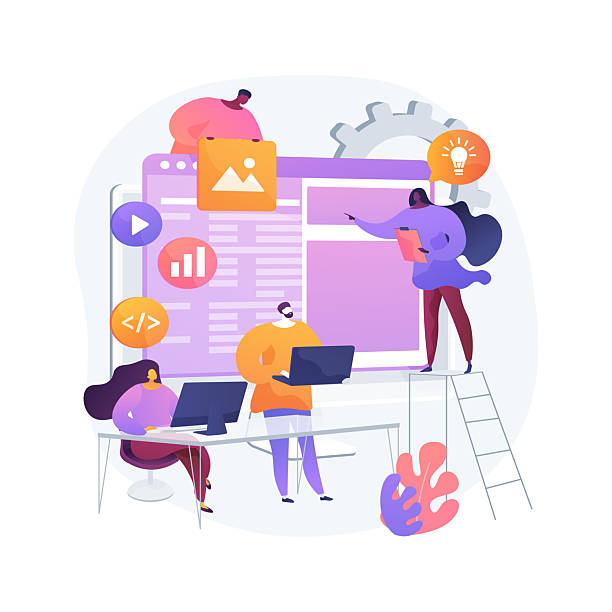
In the journey of e-commerce website design, many businesses, especially newcomers, make mistakes that can lead to reduced sales, customer dissatisfaction, and even project failure.
Identifying and avoiding these common mistakes can greatly help you build a successful online store.
One of the biggest mistakes is ignoring User Experience (UX).
A site that loads slowly, has complex navigation, or does not display correctly on mobile devices will quickly drive customers away.
No matter how excellent your products are, if the purchasing process is difficult, users will abandon the site.
Therefore, design should always be user-centric, and user testing should be taken seriously.
Another common mistake is insufficient investment in quality content.
Vague or incomplete product descriptions, low-quality images, and the lack of valuable content like a blog, not only harm SEO but also reduce customer trust.
Customers need sufficient information to make a purchase decision.
Also, ignoring site security is an unforgivable error.
Failing to use SSL, not updating software, and neglecting customer data protection can lead to cyberattacks, data loss, and damage to your brand’s reputation.
Today’s customers are very sensitive about the security of their information.
Lack of optimization for search engines (SEO) is also a significant mistake.
Even the best e-commerce website is practically useless if it’s not visible in search results.
Keyword research, content optimization, and backlink building should be part of the online store development strategy from the very beginning.
Also, not offering diverse payment options and a long, complicated checkout process leads to a high cart abandonment rate.
Customers expect to be able to pay easily and by their preferred methods.
Poor customer support after a purchase can also damage your reputation.
Quick and effective responses to questions and complaints encourage customers to return and make repeat purchases.
Finally, lack of planning for future scalability is also a mistake.
As your business grows, your site should be able to handle more traffic and more diverse products.
Choosing the wrong platform initially can cause problems in the future.
By avoiding these mistakes, you can significantly increase your chances of success in the world of e-commerce website design and build a sustainable online business.
Future Trends in E-commerce Website Design

The world of e-commerce website design is rapidly evolving, with new trends constantly emerging that can revolutionize the online shopping experience.
Awareness of these trends and readiness to integrate them into your online store is vital for maintaining competitiveness and attracting new generation customers.
One of the most important trends is personalized shopping experiences.
Today’s customers expect websites to offer them products and special promotions based on their purchase history, interests, and behaviors.
Using Artificial Intelligence (AI) and Machine Learning to analyze user data and provide more accurate recommendations helps increase conversion rates and customer loyalty.
Augmented Reality (AR) and Virtual Reality (VR) are also finding their place in e-commerce.
Imagine a customer being able to virtually try out furniture in their home before buying, or seeing clothes on their virtual model.
These technologies can bridge the gap between online shopping and physical retail experiences and help reduce product return rates.
Voice Commerce, with the growth of voice assistants like Siri and Alexa, is becoming an emerging trend.
Optimizing the site for voice search and enabling purchases with voice commands could be a significant competitive advantage in the near future.
Frictionless Commerce also means removing any barriers in the purchasing process.
This includes easy registration, one-click payments, and simple product return processes.
Headless Commerce architecture, where the frontend (user interface) is decoupled from the backend (logic and data), gives businesses more flexibility in delivering innovative user experiences across various platforms (website, mobile app, kiosk, smartwatch).
Sustainability and ethics in business have also gained increasing importance for customers, especially the younger generation.
E-commerce website design that emphasizes transparency about product sourcing, sustainable supply chains, and corporate social responsibility can increase customer loyalty.
Finally, Social Commerce, which combines e-commerce and social networks, is also growing.
The ability to buy directly from social platforms or strong integration with them is a way to reach customers where they spend a lot of their time.
By considering these trends and making appropriate investments in online store development, businesses can prepare themselves for the future of e-commerce and lead in the competitive market.
Frequently Asked Questions
| Question | Answer |
|---|---|
| 1. What is e-commerce website design? | The process of building an online platform where products or services are displayed for sale to customers. |
| 2. Why should we have an e-commerce website? | 24/7 access to customers, reduced costs, market expansion, and increased sales without geographical limitations. |
| 3. What are the most important features of a successful e-commerce website? | User-friendly interface, high loading speed, security, diverse online payment options, and advanced search and filter capabilities. |
| 4. What does it mean for an e-commerce website to be responsive? | It means that the website is displayed correctly and with an appropriate layout on all devices (mobile, tablet, desktop). |
| 5. What role does SEO play in the success of an e-commerce website? | It increases the site’s visibility in search engine results and attracts more organic (free) traffic to the store. |
| 6. Which platforms are popular for building e-commerce websites? | WooCommerce (for WordPress), Shopify, Magento, and PrestaShop are among the widely used platforms. |
| 7. How important is security in an e-commerce website? | It is of very high importance because sensitive customer information (such as credit card details) and personal data are exchanged. Using SSL is essential. |
| 8. What is an online payment gateway and why is it necessary? | It is a system that allows receiving payments from customers online. It is essential for conducting financial transactions in an online store. |
| 9. What steps should be taken after launching an e-commerce website? | Digital marketing (SEO, social media), product updates, customer support, and visitor data analysis. |
| 10. Is programming knowledge required for e-commerce website design? | It depends on the chosen method. With CMSs like WordPress and WooCommerce, an online store can be launched without programming knowledge, but it is needed for advanced customization. |
And other services of Rasa Web Advertising Agency in the field of advertising
Smart Marketing Automation: Revolutionize customer acquisition with the help of key page optimization.
Smart Reportage: A combination of creativity and technology for digital branding through key page optimization.
Smart Sales Automation: An innovative service for increasing click-through rates through marketing automation.
Smart Website Development: A professional solution for customer acquisition focusing on the use of real data.
Smart Data Analysis: A fast and efficient solution for increasing click-through rates focusing on marketing automation.
And over a hundred other services in the field of internet advertising, advertising consulting, and organizational solutions
Internet Advertising | Advertising Strategy | Advertorial
Resources
Comprehensive E-commerce Website Design
Online Store Setup Guide
Successful Online Business
E-commerce Website Design Tips
? To boost your business in the digital world and reach the peak of success, Rasaweb Afarin Digital Marketing Agency is your partner and guide, offering comprehensive services including custom website design, SEO, and content marketing.
📍 Tehran, Mirdamad Street, next to Bank Markazi, Kazerun Jonubi Alley, Ramin Alley, No. 6



